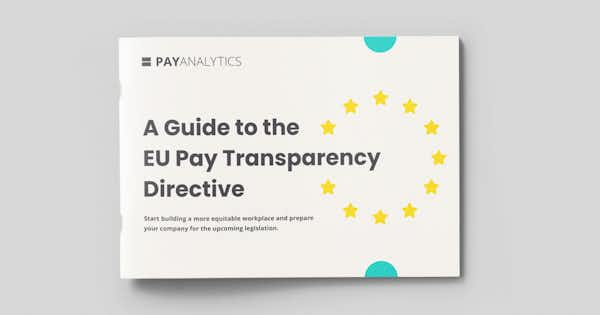Cómo prepararse para la Directiva europea sobre transparencia salarial | Obtén nuestro E-book gratis

#65 - Nadja Sirotkina on Global Fair Pay Analysis at Breitling
Breitling is known for its expertly engineered timepieces. And in the last few years, the renowned watchmaker has also been applying its eye for precision and accuracy to a workforce goal: evaluating and minimizing its gender pay gap. This week, Henrike talks with Nadja Sirotkina, Breitling’s rewards and performance lead, about what she and her colleagues have learned during the company’s pursuit of pay equity.
Breitling has about 1,700 employees, about half of them based in Switzerland. About three years ago, the country implemented new fair pay standards. To assess and prove compliance, Breitling did a fair pay analysis for its Swiss population, and the results were great: the pay gap was below 1%. This, Nadja said, “triggered the appetite to see where we were globally.”
This was no small undertaking. Although Breitling is not a large company, it operates in about 40 different markets. As they were beginning the analysis, Nadja and her colleagues made some big discoveries.
Taking pay gap analysis from one market to many
First, they realized that the kind of global fair pay analysis they wanted to undertake is actually rather rare. Instead, companies usually run analyses at the country level, and then at the global level, they conduct weighted aggregated pay gap analysis.
Second, Nadja says, they realized that data quality is key. And for a global analysis, global data is needed. Fortunately, Breitling had already implemented a database that made base pay data available globally. (They are now working on making other data, like variable rewards and benefits, available globally as well.)
In addition, as the analysis unfolded, Nadja realized that what she perceived as an idiosyncrasy in Breitling’s pay structure ended up being a strength. When she first came aboard, she remarked on how numerous and narrow the pay bands were compared to many other organizations of comparable size. But when the analysis of the Swiss population revealed that the company only had a small pay gap, they did more analysis to uncover the reason—and found that the narrow pay bands were a major cause. In other words, Breitling followed very specific criteria when making pay decisions, and that kept the gender pay gap small.
And, as Henrike points out, having such specific criteria may also help Breitling comply with the upcoming EU pay transparency directive. The directive emphasizes the need for companies to be able to explain to any employee, at any time, exactly why they are paid what they are paid. (For more on how to prepare for the EU directive, see our short pocket guide or download our e-book.)
Finally, Nadja shares one of her biggest takeaways from Breitling’s fair pay process, which is that it’s important to make sure that fair pay initiatives aren’t just a one-time thing, but an integral part of the company’s leadership culture. “The important thing,” she says, “is what you do with your results.”
Watch Henrike and Nadja’s full conversation here
Friday Coffee Talk from Planet Fair is a podcast/videocast series co-hosted by PayAnalytics founder Margrét Bjarnadóttir and Henrike Von Platen, founder and CEO of the FPI Fair Pay Innovation Lab in Berlin. It is available through all podcast platforms as well as on YouTube as a videocast.


